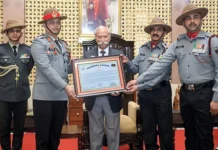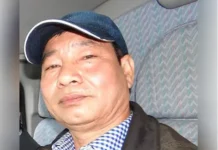[ Suhas Chakma ]
The use of the term ‘racial profiling’ by the Chakma Development Foundation of India (CDFI) in the context of the census of only the Chakmas in Arunachal Pradesh reignited the debate on race and racism. Undoubtedly, racism is one of the most misconstrued terminologies despite the fact no community or ethnic group is free from ‘racism’, especially with respect to the neighbouring communities.
The United Nations International Convention on the Elimination of All Forms of Racial Discrimination (ICERD) of 1965 provided an all-encompassing definition of ‘racial discrimination’ as “any distinction, exclusion, restriction or preference based on race, colour, descent, or national or ethnic origin which has the purpose or effect of nullifying or impairing the recognition, enjoyment or exercise, on an equal footing, of human rights and fundamental freedoms in the political, economic, social, cultural or any other field of public life.”
In India, Article 15 of the constitution prohibits discrimination on the grounds of race. Further, on 2 March, 1967, India ratified the ICERD and on 21 September 2010, the union government issued a gazette notification specifying that the ICERD “as an international covenant in its application to the protection of human rights in India” under the Protection of Human Rights Act of 1993. India regularly submits periodic reports to the UN CERD Committee monitoring implementation of the ICERD, and the CERD Committee in its 104th session from 9 to 25 August, 2021, adopted the list of issues for the examination of India’s next period report.
The moot question is whether the census of the Chakmas only by Arunachal state constitutes racial profiling. The Chakmas belong to a different ‘ethnic’ group and they are ‘descendants’ of migrants from East Pakistan, for which they are being singled out. Therefore, a census for the purpose of determining legal migrants, ie, holding the rights, and illegal migrants, ie, without rights, “has the purpose or effect of nullifying or impairing the recognition, enjoyment or exercise, on an equal footing, of human rights and fundamental freedoms in the political, economic, social, cultural or any other field of public life” as provided under the ICERD, which is applicable in domestic law in India.
In fact, the full bench of the Election Commission of India (ECI) consisting of then Chief Election Commissioner TS Krishnamurthy and Election Commissioners N Gopalaswamy and BB Tandon vide Order No 23/ARUN/2003, dated 3 March, 2004, on the exclusion of the Chakmas and Hajongs from the electoral rolls stated: “Under Article 325 of the constitution, it is laid down that no person shall be ineligible for inclusion in or claim to be included in any electoral roll for any constituency on grounds only of religion, race, castes, sex or any of them. It is evident that the names of the aforesaid eligible Chakmas in the state of Arunachal Pradesh have not been included in the electoral rolls mainly for the reason that they belong to the Chakma tribe/race, which is violative of the constitutional mandate of Article 325.” The ECI is a constitutional body.
The case of racial profiling of the Chakmas becomes more pronounced in case of comparative analysis. The Chakmas were settled by the union of India, the only competent authority in the absence of any other administrative authority whether union territory or state at the relevant point of time during 1964 to 1969, and therefore, they are entitled to all other rights enjoyed by the citizens, except the affirmative actions for the scheduled tribes. In comparison, Arunachal Pradesh has other groups of populations who were not settled by the union of India. This includes the Tibetan refugees and there are allegations of the Tibetan refugees becoming naturalized in the state. With Arunachal Pradesh sharing its borders with Myanmar and China, the immigration of persons belonging to other communities since 1947 is also known, in addition to illegal immigration through Assam. In order to avoid being levelled as communal, I do not wish to refer to the other groups of populations who are not indigenous to Arunachal Pradesh and who were also not settled by the union of India. These groups have a higher exponential growth rate of population than the Chakmas, thereby raising serious questions of illegality, including violations of the Bengal Eastern Frontier Regulation of 1873.
It is also a fact that racial discrimination by the same stock of people is not unique to India or Asia. It is a global phenomenon.
The UN CERD Committee in its concluding observations (CERD/C/CHN/CO/14-17) after examining the periodic report of China on 19 September, 2018, expressed concern that “ethnic Uighurs, Mongolians and Tibetans, together with certain other ethnic minorities in China, including Hong Kong, China, often face discrimination in job advertisements and recruitment processes.” Even though Tibetans, Mongolians and many other ethnic minorities share the same physical features with the Han Chinese, the UN CERD Committee expressed concerns against racial discrimination by the Chinese authorities.
The UN CERD Committee in its concluding observations (CERD/C/JPN/CO/10-11) on Japan on 26 September, 2018, expressed similar concerns against “incitement to violence and use of violent hate speech against ethnic minority groups, such as the Koreans” and cases of discrimination against indigenous Ainu people who physically appear to be the same stock as the Japanese.
In Africa, the UN CERD Committee expressed similar concerns against racial discrimination against non-Tswana tribes in Botswana and Sengwer, Endorois, Ogiek and other indigenous peoples in Kenya, etc, who physically appear to belong to the same stock as African origin people.
Each time there are local disputes between the Chakmas and other communities, the issue of illegal immigration of the Chakmas and the demand of their census comes up. I can say with authority and statistics that other communities potentially pose bigger threats to indigenous peoples, including Singphos and Khamtis, than the Chakmas. No one knows this fact better than Deputy Chief Minister Chowna Mein as inter-community marriages in those areas testify.
The question is how long can one beat a dead horse? Focusing only on the Chakmas vitiates the peaceful coexistence on the ground and develops a narrative in which the state and the indigenous peoples ignore bigger threats to the indigenous peoples of the state. (The writer is the founder of the Chakma Development Foundation of India)



